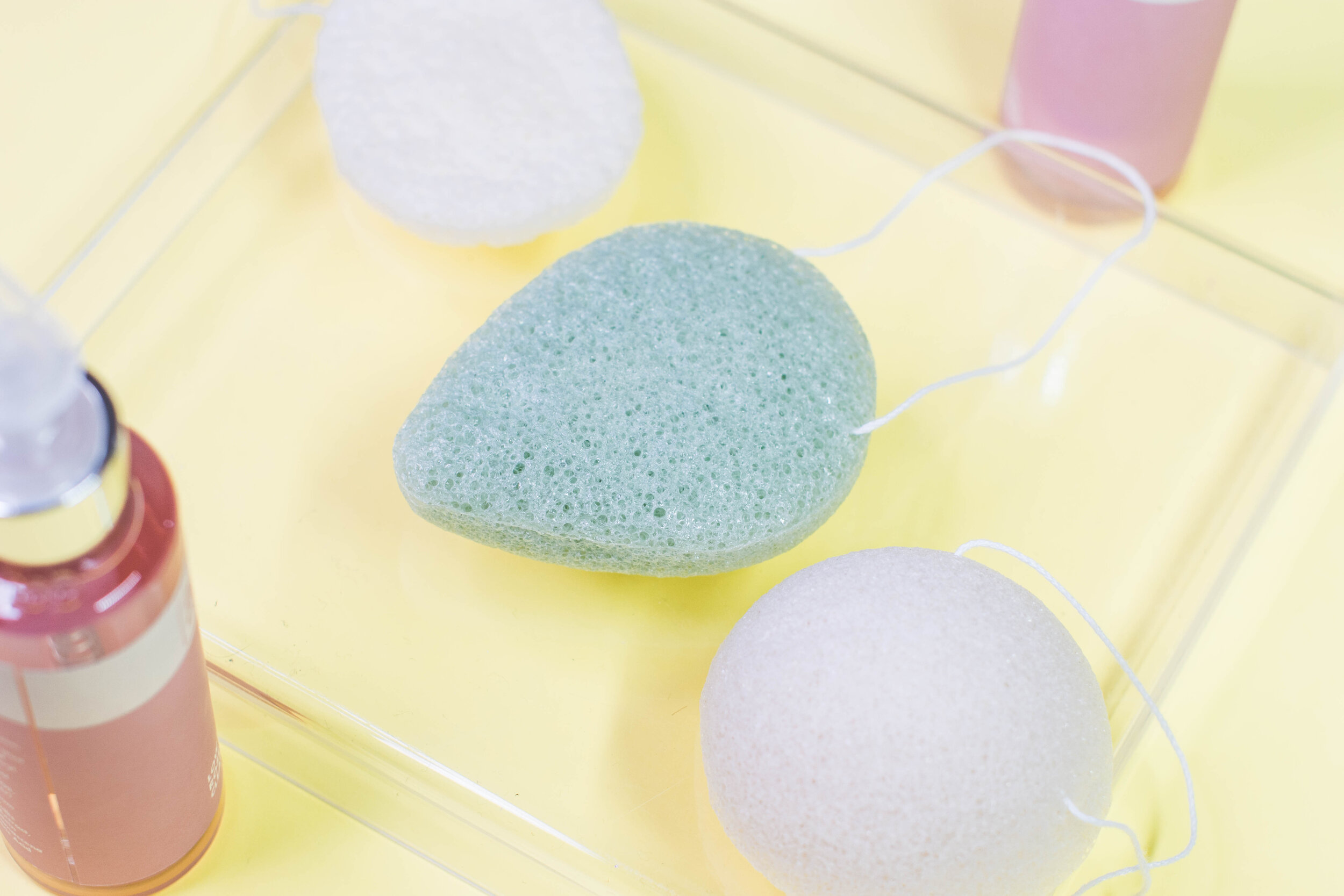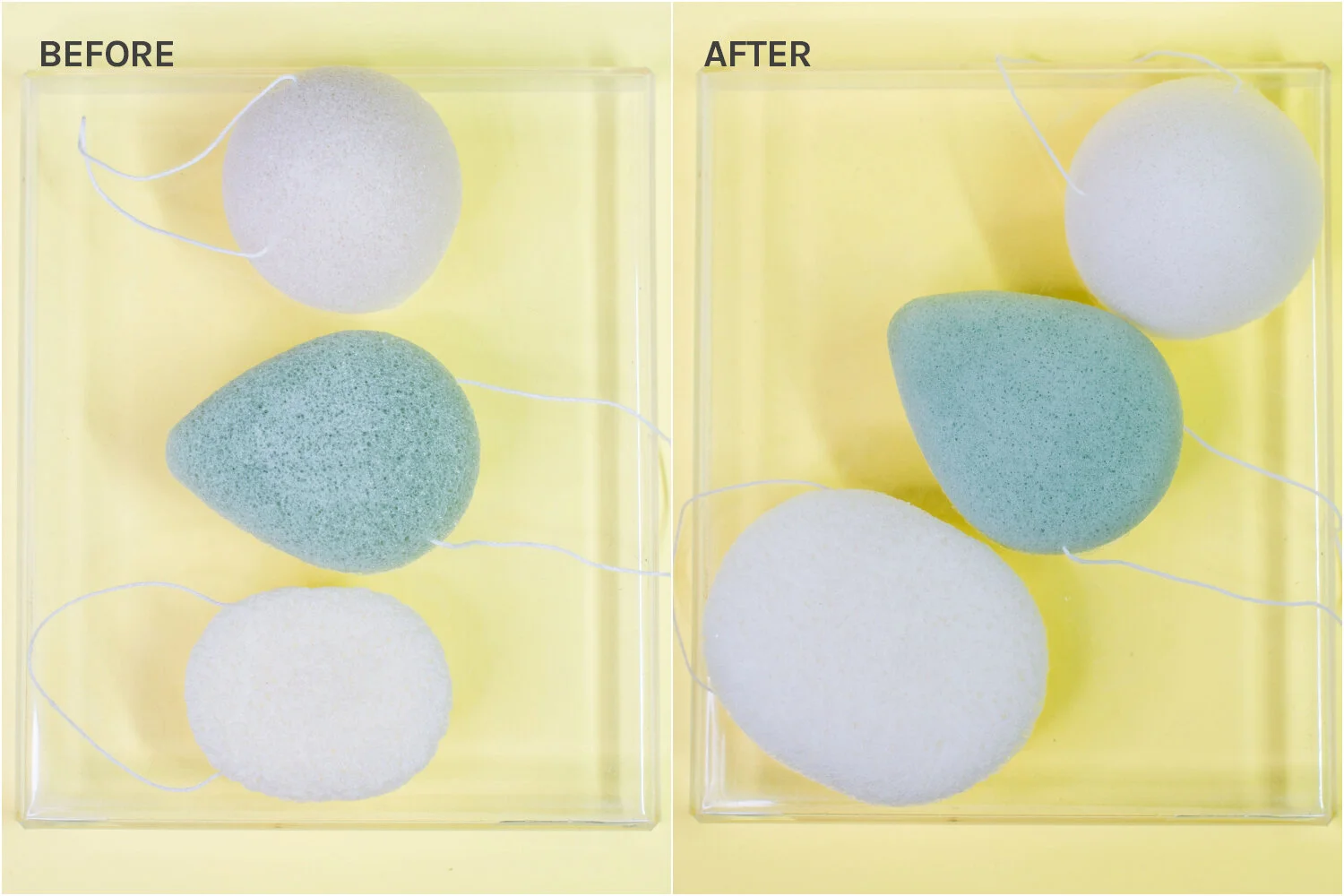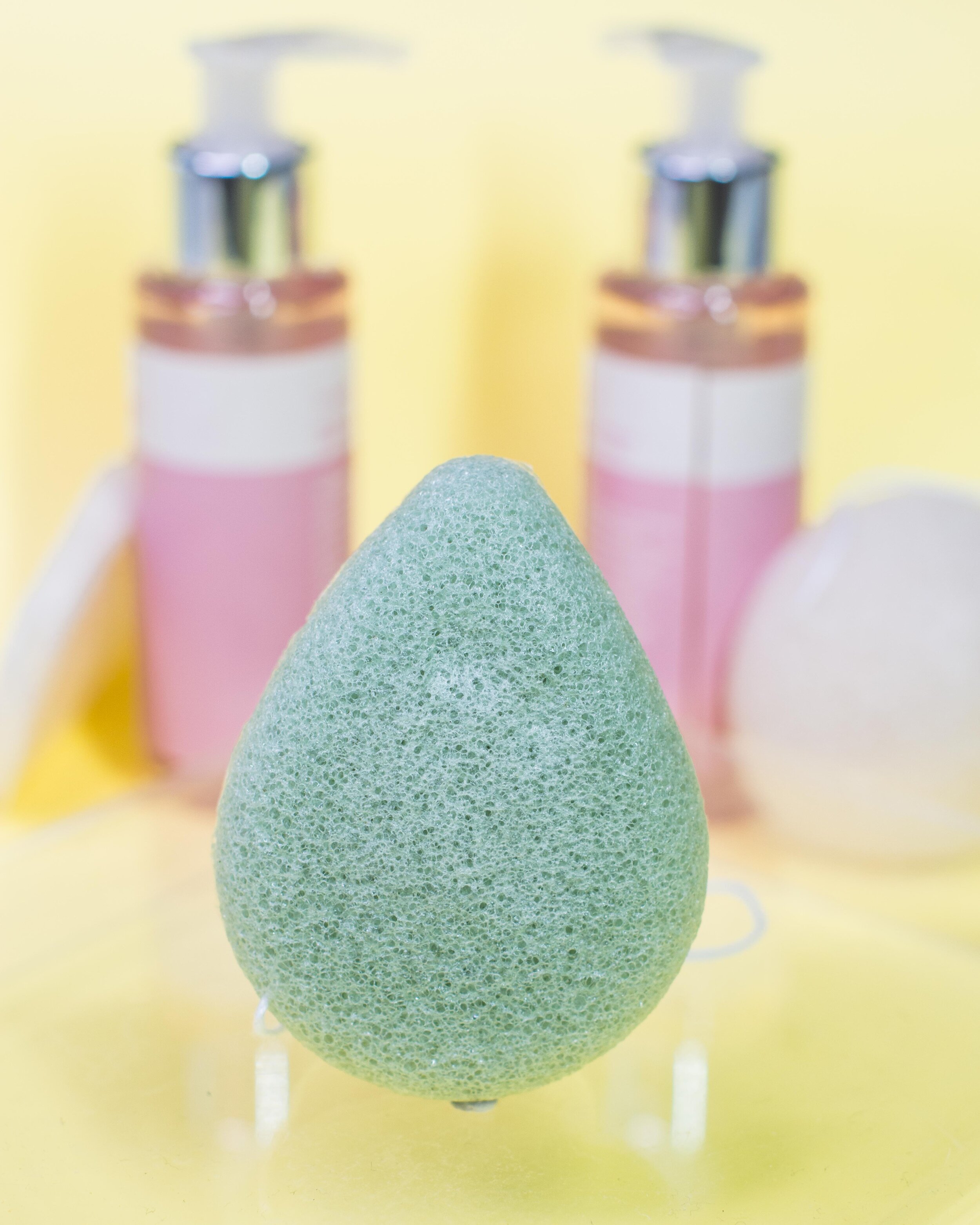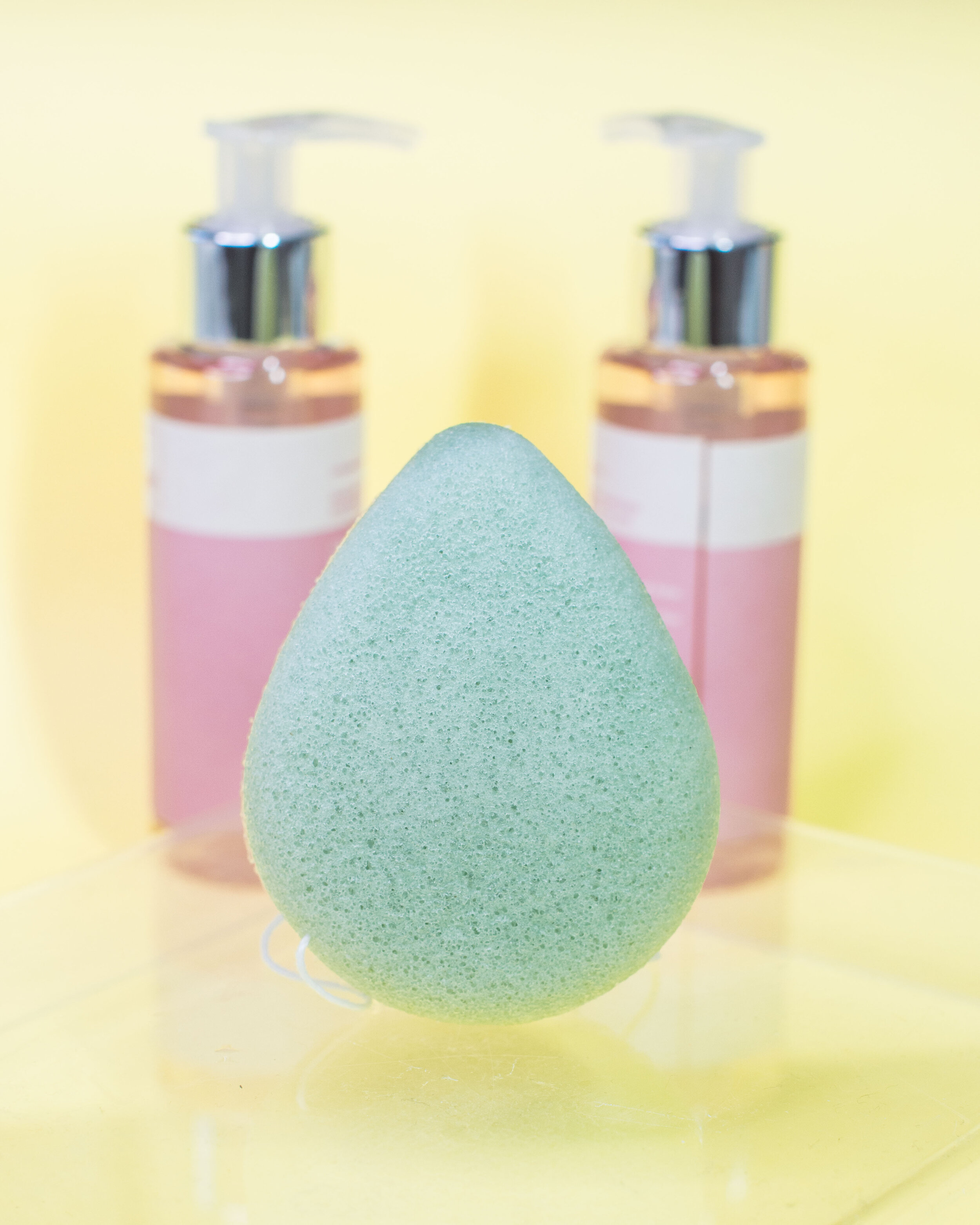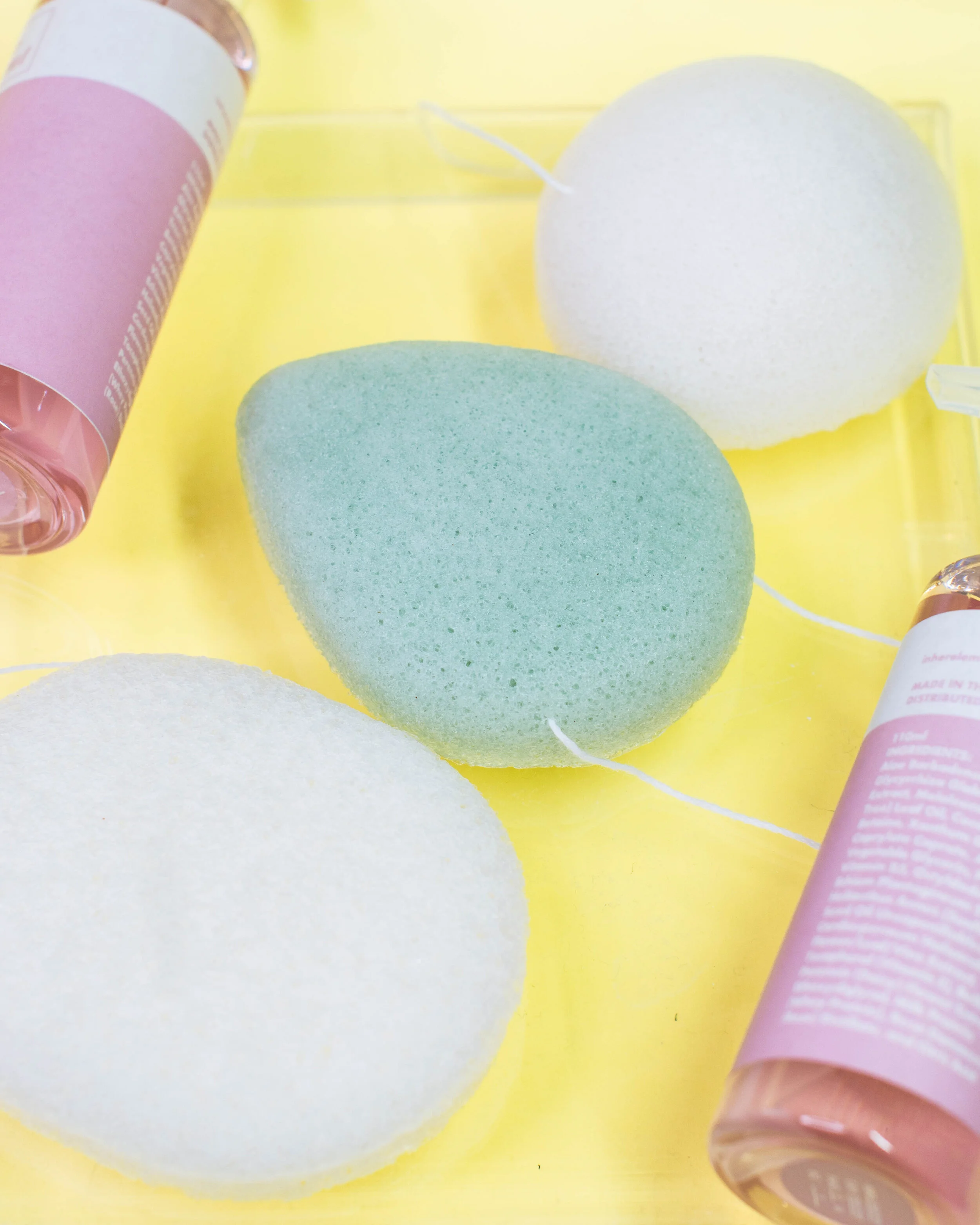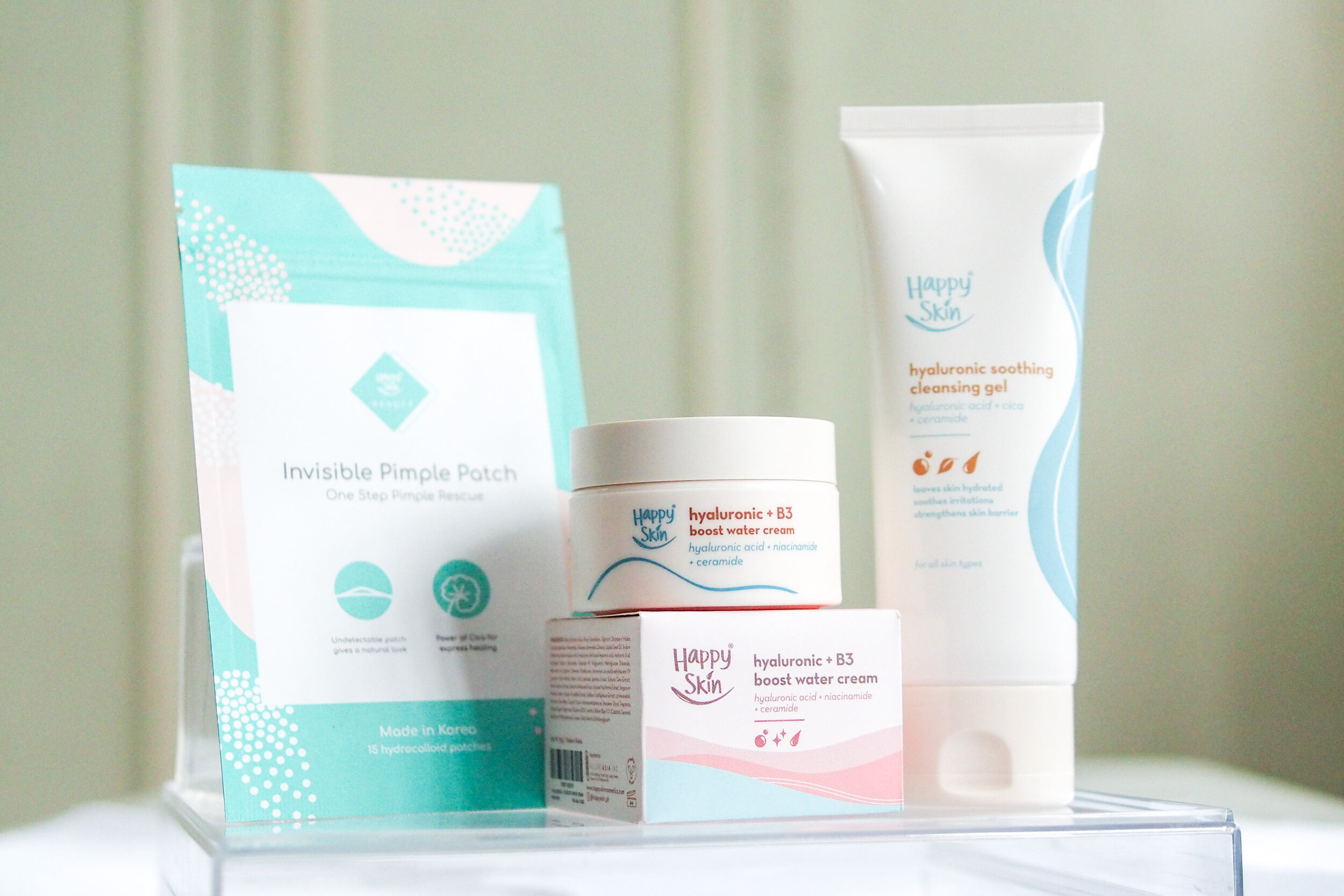To Splurge, Or Not To Splurge: How much should you spend on konjac sponges?
My favorite skincare step has to be cleansing because I like how it makes my skin feel instantly refreshed. In the morning, I use my fave low pH cleanser, and double cleanse to remove makeup and dirt at night. I’ve experimented a bit with facial washes and oil cleansers but I’ve never tried using any cleansing tools.
My curiosity was piqued when I received a konjac sponge. In the packet, it looked and felt very hard and coarse. I was puzzled by why anyone would use such a rough object to wash their face with, but Den showed me how wetting the konjac turned it into a super soft, jelly-like texture that actually felt nice on my skin!
Konjac sponges are made from konjac, a root crop commonly found in China, Japan, and other Asian countries. Konjac is used to make jelly and flour for different Asian dishes, and powder to make the sponge. Plain konjac sponges have a whitish color, but some brands mix the powder with ingredients like charcoal, green tea, or even clay. These additions are supposed to infuse the sponges with additional properties like anti-aging or pimple prevention. Some konjac sponges cost over P1,000 so I had to wonder if the pricier ones actually worked better.
I got to try two sponges: the Swan Compact Round Facial Konjac Sponge (P85 at Landmark) and not.a.sponge* Bamboo Charcoal Konjac Sponge (P450 at Beauty Bar). You can also find cheap sponges in Daiso, and fancier ones in Sephora.
I first tried out the Swan sponge to cleanse my face. I dispensed my cleanser onto my palm and worked it into a lather before applying all over my face. I used the wet konjac sponge to massage and gently buff the cleanser on my skin. After rinsing, my skin felt clean without getting too dry. The soft and bouncy sponge texture also made my cleansing a more fun experience!
The next day, I tried the Bamboo Charcoal sponge following the same routine. This sponge has Bamboo Charcoal that claims to purify pores. Frankly, I didn’t really notice any difference in cleansing, though my skin felt a bit smoother and also a hint drier. I wonder if this is because of the charcoal in the sponge?
I also tried using the sponges for makeup removal with a cleansing oil that has to be used with cleansing cloth. After massaging the oil to my face, I used the wet sponge to remove it. The emulsified oil and makeup stuck to both sponges, but though my skin felt clean, I still found traces of the cleansing oil on my face so I had to rinse with more water. That worked out alright but with the emulsified oil absorbed by the sponge, it became difficult to clean. I had to use warm water to rinse all traces of the oil and makeup, and cleaned it twice to really remove everything. For this reason, I think it’s better to just use the sponge as part of your second cleanse, after makeup has been removed. I’m concerned that bits of emulsified oil and makeup may accumulate in the sponge and cause breakouts with continued use.
After using both a cheap and a pricey konjac sponge for my routine, did I notice a difference in how well they cleaned? Save for the bit of dryness that I noticed when using the charcoal sponge, not really. I think the plain sponge works just as well as the bamboo charcoal one in making my skin feel smooth and clean. According to Honesty for Your Skin, these add-on minerals such as green tea, turmeric, and clay don’t really do anything, and just end up down the drain.
It’s also important to note that konjac sponges need to be replaced after a month or two of use, so it doesn’t really make sense to get the pricier product.
Should you give up your regular scrub and switch to konjac instead? It would depend on your skin type and preferences.
Those with oily skin and stubborn dry flakes may benefit using the regular scrubs, while those with sensitive skin might enjoy the gentle texture of the konjac.
Scrubs are cheaper and more sanitary since you can just dispense product for every use.
On the other hand, konjac sponges need to be properly cleaned and dried after each use to prevent bacteria and mold growth. They need to be replaced regularly so they are more costly. They are biodegradable though so you don’t have to worry about microplastics or creating plastic waste.
Now that I’ve tried it, I actually prefer using a konjac sponge with my low pH cleanser because it helps to create more of a lather and also exfoliates my skin at the same time! I was also trying out the konjac sponges just right before my attempt at the grit method, so maybe this is why I didn’t collect much grit?
Konjac sponges may also be useful cleansing tools for men with beards, as it helps to clean and exfoliate the skin underneath without getting tangled in their facial hair.
Have you tried konjac sponges? Would you consider using these instead of a scrub? What’s your favorite tool to use for cleansing?
Photography by Nicole Quindara


